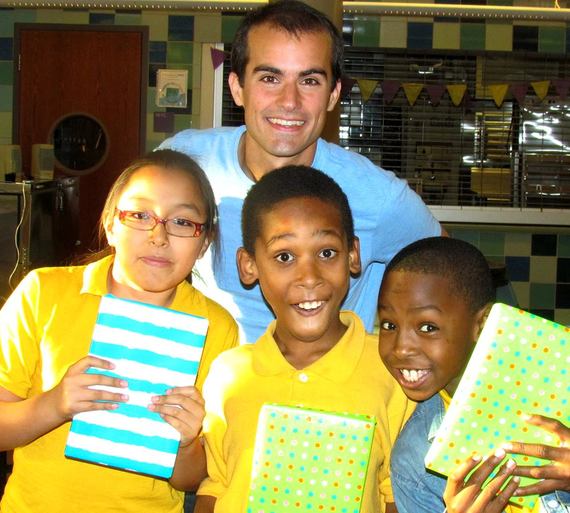It seems like every day a new study emerges that demonstrates the opportunity gap between children from struggling backgrounds and their well-off counterparts. The statistics are depressing. But the grassroots momentum to close these gaps has been inspiring -- look no further than the #BlackLivesMatter campaign, or the enthusiastic supporters at a Bernie Sanders speech, or poll after poll showing that Millenials prefer to work for companies that do good in the world over more traditional work incentives. People are frustrated -- and should be. My hope is that we can shift the conversation toward the root causes of some of these socioeconomic disparities and look to close key gaps, such as that in education, in order to have a long-term impact on opportunity.
Low-income and middle-income children are growing up in vastly different educational environments. In low-income neighborhoods, children grow up with only one book for every 300 kids. Compared to children in middle-income households, who average about 13 books each, poor children are exposed to fewer words and concepts, and are less mentally stimulated -- even before starting school. Simply having access to books improves children's reading performance throughout their education, leading to long-term benefits in education, and subsequently in income, employment, and socioeconomic status. Unfortunately, not all kids have that access.
As a society, there are a lot of ways we can close this gap. President Obama recently announced an initiative to partner with publishers and libraries to provide digital access to 10,000 books to low-income students. FirstBook, a non-profit, leverages donations and partnerships with publishers to donate used books or excess publisher inventory to low-income school districts, and through its FirstBook Marketplace sells them to low-income schools at a highly discounted rate. This not only gets a lot of books to children who need them -- nearly 85 million at last count -- but maintains the integrity of the retail book industry by segmenting the market without under-cutting it. These, combined with countless other book donation platforms -- from large scale, to local community projects -- help to fill the critical gap that continues to fuel opportunity disparity.
BookBugs, my company, has joined a movement for business model innovation in the hopes that, together with these efforts, we can help build momentum toward creating the opportunities that children in low-income communities need. As TOMS and Warby Parker have shown in the shoes and eyeglasses industries, modern consumers place a premium on social impact. This business model innovation is not going away: Millenials tend to consider private industry as underperforming in improving livelihoods and more and more they want to work for, and do business with, companies that improve our communities and society.
Harnessing this trend and the benefit corporation movement , BookBugs sells books and also donates books to children in need through literacy-focused non-profit partners. This sales-to-donation model enables us to purchase new books, chosen by educators based on what they believe is best in their classroom, rather than the donated books relied on by many large-scale non-profits. Making sure kids get the right books is not cheap. To charge competitive prices on books, we can only afford to donate one for every three we sell, but by generating sales from enthusiastic customers, rather than relying on the ebbs and flows of generous donors, we hope that we, like TOMS and Warby Parker, will create a revenue stream that is sustainable for the long-term.
This fall, as young students head back to school, we are spending the month of September encouraging reading and increasing our donations by asking teachers and librarians (and anyone else who wants to participate) to post a picture of a book that changed their lives on social media. We are calling it the #bookthatchangedmylife campaign, because we believe in the power of books to transform kids' lives for the better. For every three posts that tag our social media accounts, we'll donate a book to a child who needs one. Using social media and the inherent power of consumers allows us to create a simple but powerful and lasting way to foster a culture that embraces literacy and gets more books into the hands of our nation's children.
Whether it is through our Book That Changed My Life campaign, volunteering locally, or supporting a non-profit book donor, there are lot of ways to help kids in need build their reading skills. Many of us had the opportunity to grow up in a community where books could change our lives, and it is imperative that we create an everyday culture that supports and facilitates access to books for young and new readers.
Without it, our generation risks having poor children grow up with even fewer opportunities than that of their peers, and we all risk deepening the opportunity divide whose byproducts have led to less wage growth at lower income levels, and less and less social understanding between rich America and poor America. We have to look to our everyday lives and a thirst for social change to address some of our society's foundational challenges -- our kids are counting on it.
 The author at BookBugs' first book donation in Hartford, CT
The author at BookBugs' first book donation in Hartford, CT